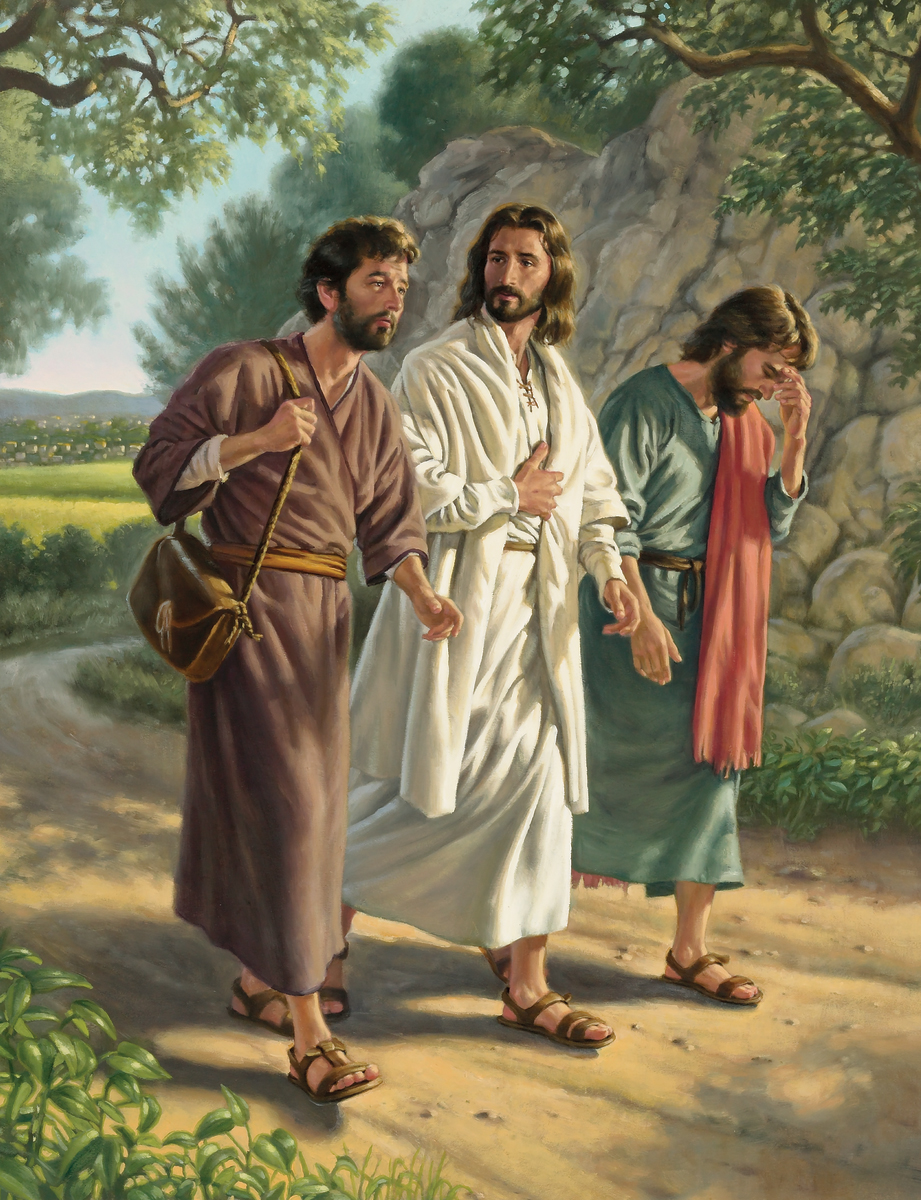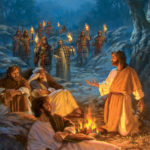The text for this lesson is Luke 24:13–35.
Key Point
- Even though Jesus is not visible to us, His suffering and glory are revealed to us through faithful teaching and the breaking of bread.
- Law:Without Jesus’ Word, we are ignorant of the truths of salvation.
- Gospel: Jesus makes His salvation known to us through teaching and the breaking of bread.
Discussion Points
- It is the first day of the week following Jesus’ crucifixion. Jesus has risen, yet so far He has been seen only by the women who went to the tomb early to finish treating His body for burial. The band of disciples appears to be feeling a range of emotions: sadness at the death of Jesus; cautious hope over the reports of His resurrection; confusion that Jesus had not liberated Israel from the Romans. The two disciples in the account are walking from Jerusalem to Emmaus, perhaps returning home after celebrating the Passover. The recent crucifixion of Jesus is clearly central to their thoughts and conversation.
- Now that redemption has been accomplished, the resurrected Jesus has the opportunity to begin teaching and explaining why this suffering was necessary and how it accomplished God’s salvation. The two disciples, with the recent events on their mind, will be very open to hearing and understanding Jesus’ fulfillment of the Scriptures. Jesus approaches them and walks with them, yet He keeps Himself from being recognized by them. This is so they focus on the teaching and instruction, rather than being overcome immediately by the surprise and excitement of recognizing Him.
- Jesus begins speaking with them not by controlling the direction of the conversation but by asking them about what they are saying. Through questioning, He draws out their emotions and interpretations of the recent events. From there, their hearts are open to returning to the source of the true understanding of the events surrounding the crucifixion, the Scriptures. With attention given to the Scriptures, Jesus is able to explain the meaning of the recent events in light of the writings of Moses and the prophets.
- It is significant also for us to recognize that “all the Scriptures” speak concerning Jesus (Luke 24:27). A full reading of the Old Testament is one where we ask how a passage looks forward to or compares with Jesus or how the passage anticipates Christ’s redemption. For the Old Testament Scriptures show that it was “necessary that the Christ should suffer these things and enter into His glory” (24:26). It was necessary because, by His suffering, Christ brought redemption to all people.
- Although the disciples invite Jesus to join them in the house, Jesus becomes the host, blessing, breaking, and distributing the bread. Immediately upon doing so, He is recognized by the disciples, and He disappears. By first being open to the Word of God, they come to a fuller understanding of who Jesus is, so that their appreciation and love are deepened when they do recognize Him.
- Although this breaking of bread may not have been the Lord’s Supper itself, this whole passage serves as a kind of comparison to the Divine Service. In the service, first we hear God’s Word and its explanation. Then we gather for the Supper, where Jesus is given to us and we truly receive Him in “the breaking of the bread” (24:35). The pattern is first to learn and understand more fully, and then to receive Him as nourishment and as a friend who loves us.







